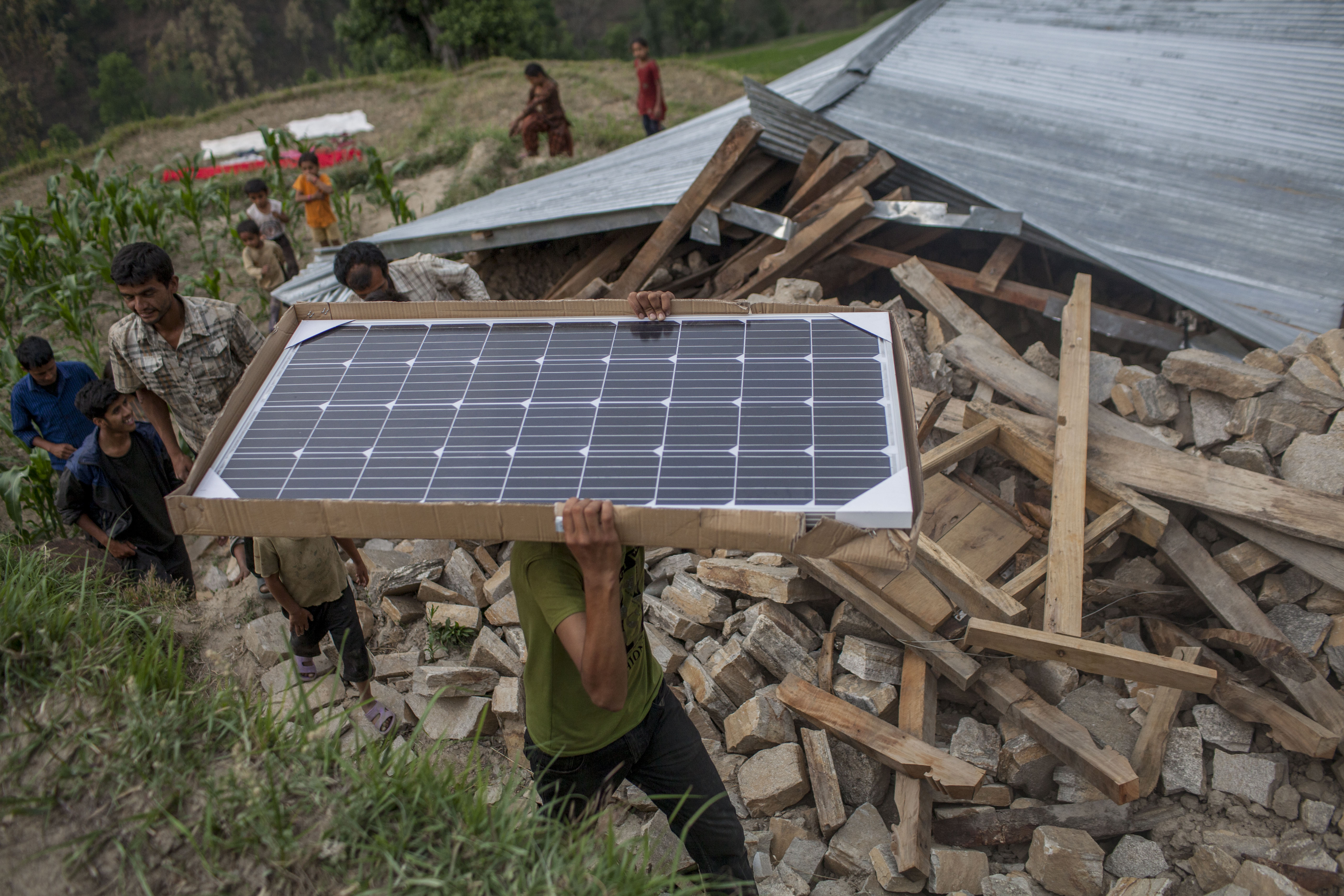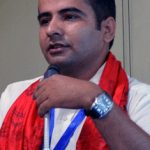The day started nice with sunny weather but now it is clouded and it often rains. That’s not good and can trigger more landslides.
An hour later a friend of mine, Kumar, arrives in a tiny car. I am a bit surprised we take that car as the road promises to be very bad at places where landslides were cleared. The equipment is loaded on the back seat of the car and I manage to fit just besides it.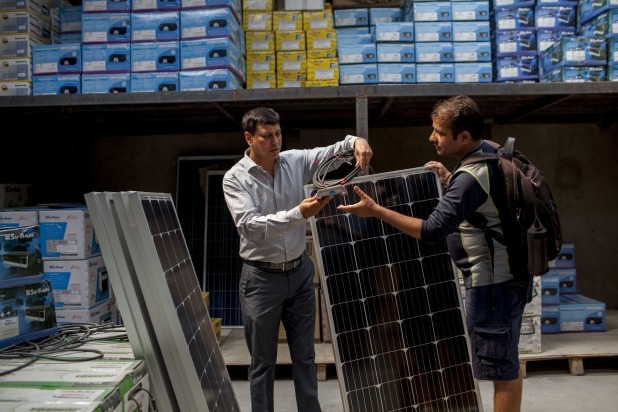
Babu Ram Aryal (right), President of the of the Internet Society Nepal and ICT lawyer, inspects a solar panel in a warehouse in Kathmandu.
We leave Kathmandu direction Sindhupalchok, a district that was severely affected, and again got extra damaged in the May 12 quake.
It is after 2 hours into the journey that we see more and more collapsed houses, but nothing like the scale of destruction I expected. Sitting in this tiny car is not fun on a road like this.
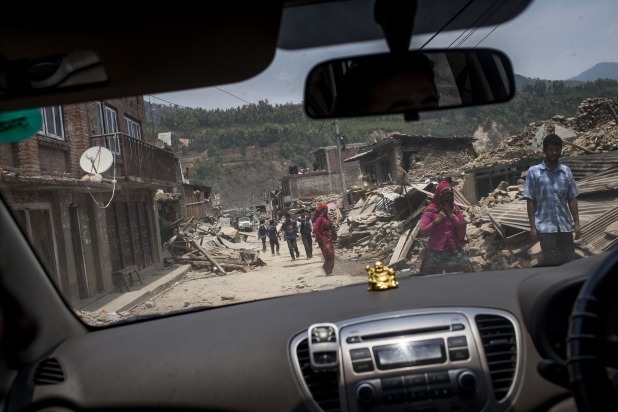
On the way to Bhotsipa, a tiny village where volunteers of the Internet Society plan to deliver a solar panel, they drive through Sipaghat where almost all houses have been destroyed when the April 25 earthquake struck Nepal.
Sometime later, when we reach the Indrawati River, I see more collapsed houses and at some places the road has been cleared of small landslides. Suddenly we drive into Sipaghat Bazar where almost all houses, many made of regular bricks and concrete are leveled, and what remains is clearly too dangerous to live in. Maybe 15% is habitable. Sipaghat is the first village we see that really looks destroyed by the earthquake.
We drive through the main road that has just a single lane cleared from debris and cross the bridge over the Indrawati River. There, at the other side of the bridge, we become stuck.
It’s surprising that we even got this far with this car.
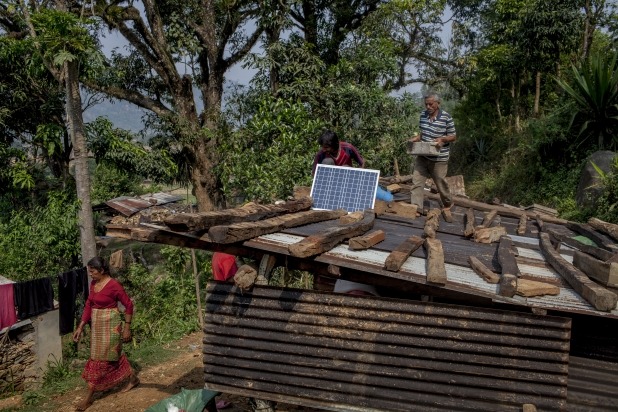
Somnath Bhattarai and his family install a solar panel and battery on the roof of their temporary shelter in Bhotsipa village. The panel and battery were donated by the Internet Society.
We drive back through the destruction of Sipaghat Bazar and the body of the car makes cracking sounds as it drives through potholes and grinds over bricks, concrete and metal still littering the cleared road.
We continue to village two, higher up North. The road serpentines following steep slopes of the Indrawati River gorge. We see the remains of larger more dangerous landslides.
The day started nice with sunny weather but now it is clouded and it often rains. That is not good and can trigger more landslides.
We move a bit further up the road to a place where there is no danger for landslides and wait for a local politician to help us find the next village where we must install the panel. It hasn’t stopped raining.
We’ll be donating the panel to a village 30 minutes walking up the steep mountain slope. There is no electricity and so far no attempts have been there to reconnect that place.
Kumar tries to drive his car up a dirt road that leads to the village but the tires just can’t get any grip and we leave the car. People of the village take over and carry the solar panel and the very heavy battery. The rain has stopped.
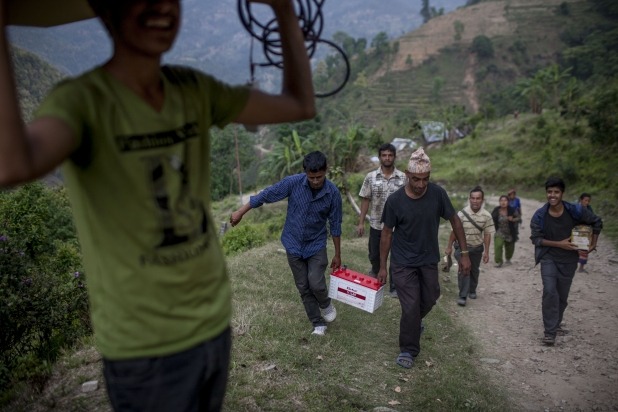
Local men of Talramarang, a tiny village that has been cut off from the power grid since the April 25 earthquake struck Nepal, carry up a solar panel and battery donated by volunteers of the Internet Society Nepal.
About 30 minutes later we reach the spot where the villagers want the panel to be installed. It is a big house and I think it is the house of the village leader, but it is also heavily cracked. The village is more a loose cluster of houses dotted on a gentle slope with rice fields. Most houses are standing, but at closer inspection are seriously damaged.
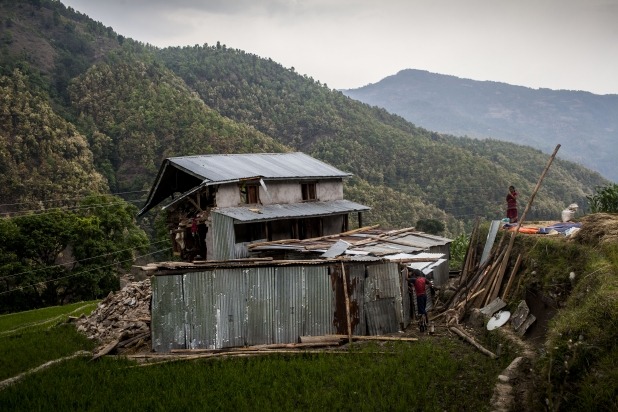
A partially destroyed house in Talramarang, a tiny village that has been cut off from the power grid since the April 25 earthquake struck Nepal.
Kumar and I install the panel, and it all works.
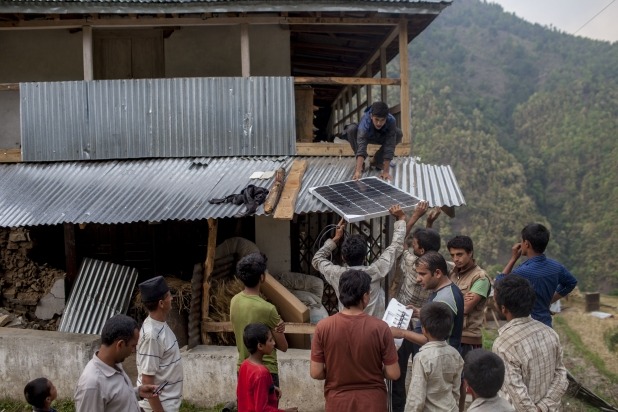
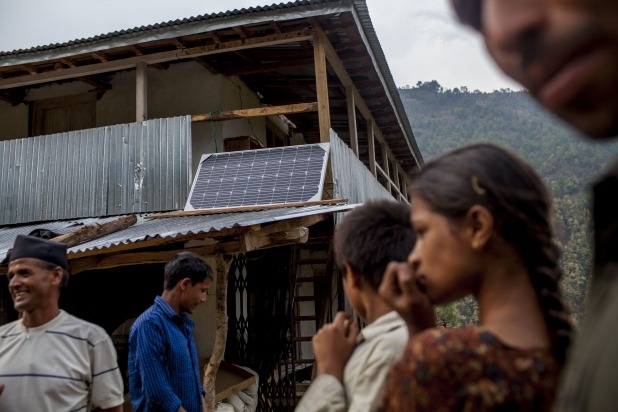
Locals of Talramarang, a tiny village that has been cut off from the power grid since the April 25 earthquake struck Nepal, install a solar panel and battery donated by volunteers of the Internet Society Nepal.
We return to Kathmandu and start to plan our next journey.
* If you would like to help the Chapter bring Nepal back online you can donate on our website.
Photos: © Tom Van Cakenberghe
